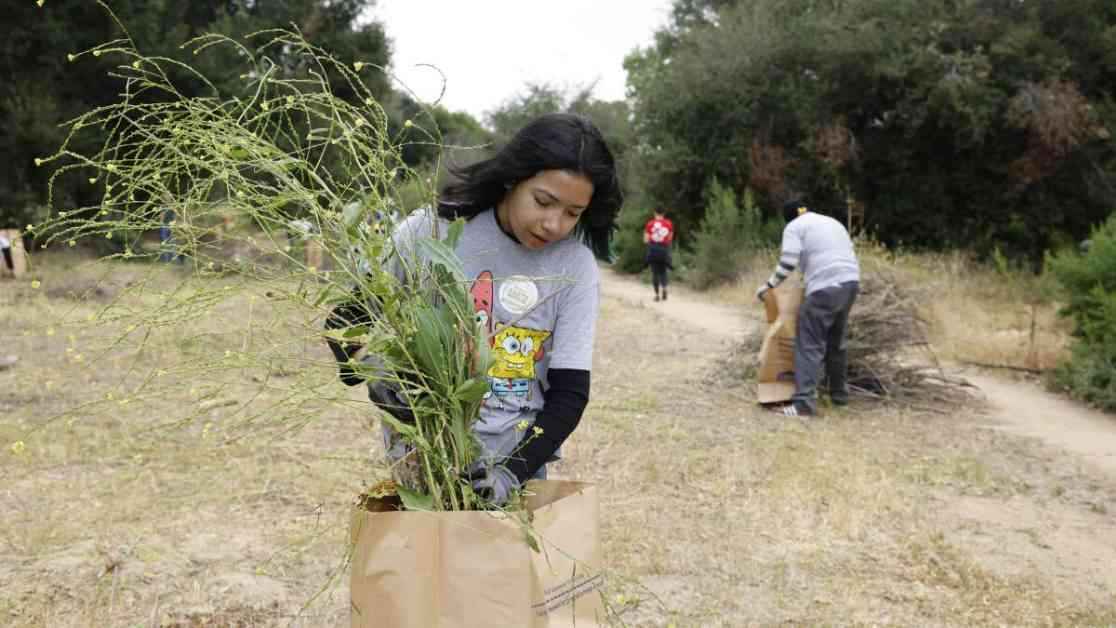The Sepulveda Basin Wildlife Reserve, located in the heart of the nation’s second-largest city, faces a multitude of challenges typical of a natural area in an urban setting. From litter and biohazards like discarded needles to invasive plant species like the black mustard, the 225-acre reserve and the wider Sepulveda Basin Recreation Area are struggling to maintain their ecological balance. On a recent Saturday morning, hundreds of volunteers gathered to tackle the issue of Rhamphospermum nigrum, commonly known as black mustard, which has taken over the reserve and poses a threat to native plants crucial for the area’s biodiversity.
Volunteers spent hours pulling up the black mustard, focusing on areas where the invasive weed had overrun the landscape. Dan Mott, an environmental educator with Friends of the Los Angeles River, emphasized the importance of removing the black mustard to allow native species to thrive and support the natural wildlife in the basin. Despite the plant’s seemingly harmless appearance with its yellow flowers, it poses a significant threat by crowding out native plants like sage and poppy. By clearing out the black mustard, the volunteers hope to restore the balance of the ecosystem and protect the Los Angeles River that runs through the area.
The event, organized by Friends of the Los Angeles River in collaboration with the California Native Plant Society and San Fernando Valley Audubon Society, aimed to celebrate Earth Day and engage the community in habitat restoration efforts. Wes Vahradian, an 18-year-old volunteer leader, used mapping software to track the progress of habitat restoration, highlighting the impact of their work in clearing out the invasive species. Despite the challenges posed by the regrowth of black mustard, volunteers like Zia Shaked and her family remained committed to the cause, recognizing the importance of preserving the natural ecosystem of the Sepulveda Basin. Through their collective efforts, the volunteers hope to create a sustainable environment for native plants and wildlife to thrive in the face of urban pressures.


